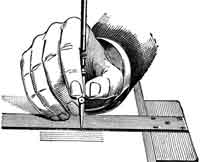Until recently, Hijab was banned in Turkey. Hijab is an Islamic practice for women, who cover their heads and faces to be oblivious to men’s attention. Despite Turkey being a Muslim state, it is of great wonder that such a practice was considered punishable by law. However, the reasons are firmly rooted in Turkey’s history and its affiliations with the west.
After Turkey abolished the Caliphate, the new republic was founded on the principle of modernism and secularism. The founding father, Mustafa Kemal introduced a series of clothing regulations which prevented the expression of any one particular religion. Kemal himself was often seen in his linen suit, and Panama hat. The century old tradition of wearing the Turkish cap, Fez, was banned amid widespread criticism. The headscarf and hijab followed soon after.
Since decades, the state has viewed the hijab as an overt expression of religion. While the secularism has made Turkey favorable among the west, the residents of Turkey have often complained and protested against such clothing bans. In 2007, Erdogan, campaigned for Prime Minister, and included the reinstatement of the hijab and Islam as a primary mandate. This was a clear indication that the people were in favor of the practice. However, after his election as Prime Minster, Erdogan could not get the Parliament to pass a favorable legislation.
Recent developments however have seen the hijab being reinstated in the civil service. The push towards a religious state had been evident in the build-up. The state however, remains firm to its secular grounds. It remains to be seen what the future holds for Turkey; for now secularism holds true, but glimpses of religious activism are getting frequent.












January 22, 2014 11:31 am
HERE IS AN ARTICLE FROM QURAN-ONLY MOHAMMEDANS:
HEADSCARF AND VEILING
QURANIC.ORG
01 October 2011
Man is the only being among the mammals who is born naked and feels the necessity of putting on clothes. Man’s attire has always shown variety throughout the ages according to the period, customs, climate, professions, offices, ages, etc. While there have been frequent changes in attire in the societies of Indo-European origin, Asian communities have preferred to be more conservative. The Ottomans are a good example of the variations in the attire of different layers of society. For instance, while the turban worn by the sultan had three crests, the one of the grand vizier had only two crests and those worn by the public could not have more than one. The headgear, costumes and the colors of the courtiers, the tradesmen, the members of religious orders varied. This was protected by law.
TRADITIONS MADE INTO RELIGIOUS PRESCRIPTIONS
What was not stated in the Quran was introduced into religious practice, and customs related to a man’s attire were considered to be part of his devotional lifestyle. For instance, the turban had been worn by nearly everybody at a given period of history to keep the head warm. There was nothing wrong in this. What was unwarranted, however, was attributing a religious character to it. We must go over the verses in the Quran to see what has been ordained as far as man’s attire is concerned.
26 – O you children of Adam! We have bestowed raiment upon you to cover your private parts as well as to be an adornment to you.
7 The Purgatory, 26
The minimum covering for both men and women has been since times immemorial the covering of the private parts of a person as foreseen in Verses 26-22 of the Sura The Purgatory. There are three verses in the Quran that have reference to a woman’s attire.
THERE IS NO MENTION OF COVERING THE HEAD FOR WOMEN
31 – Say to the believing women to lower their eyes and guard their private parts, and not display their ornaments (ziynet) except what is apparent outwardly, and cover their bosom with their veils (hýmar). And not show their ornaments except to their husbands or their fathers or the fathers of their husbands or their sons or the sons of their husbands or their brothers or the sons of their brothers and the sons of their sisters or their women or their captives or male servants free of physical need or small children who have no sense of the shame of sex. They should not strike their feet in order to draw attention to their hidden ornaments. And O believers! All of you shall repent to God that you may succeed.
24 The Light, 31
The Arabic word hýmar means simply ‘cover.’ It has a wide range of meanings. It may be any cover such as the table napkin. If it is used to cover the head, it will signify the headscarf. However, if the head had been the target, the expression should have been hýmar-ur-ras meaning the covering of the head. However, in the context, one should understand the portion of the body corresponding to the bosom. Therefore it is the low-necked attire that is meant here. Even though the headscarf was the corresponding meaning, one should conclude that it was to be used to cover a woman’s bosom and not her head.
Another important expression mentioned in the verse is the word ‘ornaments,’ which, to our own interpretation should mean the bosom. This, we believe, is in harmony with the rest of the sentence in which the covering of the low neck is imperative. Moreover, striking of the feet comes next, which might attract attention to the breasts that would be wiggling as a consequence of the striking movement, considering the brassiere did not exist at that time. Then the verse makes an exception for those ornaments that are self-conspicuous. Big breasts cannot be hidden no matter what one does, as a result of physical movements of the body, or may become even more conspicuous when the dress under the effect of a strong wind sticks to the body. So the verse explains this as a natural phenomenon. We read in other verses that women nursed their children sometimes for two years. When her baby cries she may be obliged to nurse it in the presence of her next of kin like her father. This commentary provides us with the necessary elbowroom under the circumstances. One other point that corroborates our argument is the fact that this word makes no allusion to the hanging objects that adorn a woman since the verse also mentions that they can let their ornaments be seen in the presence of women. Dangling ornaments may, of course, be used to show off rather than be an object for seduction. The striking of the feet would not render conspicuous the finery or the jewelry of the woman. Moreover, there is the fact that adornments may be used everywhere. Even during prayer they may be used, so they don’t have to be hidden (see 7 The Purgatory, 31). From all of these it follows that the word ornament is used to refer to the breasts of the woman.
VEILING
The word tasattur, which means the veiling of a woman, does not exist in the Quran. It has come to be used in the way that it is today much later. The Arabic expression humur and its singular form hýmar mentioned in the verse is a cover, any cover rather than a headscarf. The dictionaries Al Mujam ul Vasýf, Al Munjid, Lisan-ý Arab, Tajul Arus may be consulted. The connotation of the hýmar in the sense of headscarf emerged much later, following the interpretation and practices of sectarian scholarship. The Quran speaks of the bosom as the part of the body that must be covered, and not the head. The words that correspond to the headscarf worn by Arabs are mýkna and nasýf and not hýmar, for which any dictionary of the Arabic language may be consulted.
UNIFORM
It is advisable to examine the following quotation from the Quran with reference to the veiling of women:
59 – O Prophet! Tell your wives and daughters and the believing women, to cover themselves. Thus, they will be recognized and avoid being molested. God is the Forgiver, Merciful.
33 The Parties, 59
The keyword here is jilbab which means any clothing like ‘chemise’, ‘dress,’ etc. In no way does it mean a covering special to any part of the body. Yet, the interpretations of traditionalist Islamists have ascribed to this word such meanings as to imply the covering of the entire body according to some, of two eyes or one eye according to others and of the body except for the face, hands and feet according to others. Had God’s intention been to see women covered from head to toe, He would have explicitly stated it. A woman’s covering her head and wearing the veil are nothing but later fabrications of traditionalists.
For instance, God has detailed every portion of the limbs that ought to be washed during the performance of ablution. Had He wanted to set well-defined limits, He would have clearly delineated them.
The Quran that gives a detailed account of the events related to the tribes in the past would surely not spare mentioning this fact in one single sentence. It is not an omission by God, far from it. It had not been His intention to put on such categorical restrictions. As a matter of fact, the approach in 33 Sura The Purgatory, 59 to the issue is manifestly flexible. The verse implies that the apparel of a woman will reveal her identity and keep her from being molested. It is told that during the era of the Prophet, there were women who went around semi-naked, with breasts generously exposed to view. Before the supremacy of Islam, it is said that the ritual of pilgrimage to the Kaaba was performed by women in a naked state (Kurtubi, al Jami-il Ahkamil Kuran.) We can deduce from the verse mentioned above that during the pre-Islamic period women were used to exhibiting their ornaments (ziynets). The decent woman, who preferred to preserve her chastity, well knew how she should dress in order to avoid harassment by men. However, regardless of the decency of her dress, a woman may be the subject of attacks. The verse addresses the woman to suggest she simply beware of indecent proposals by men who would approach her, attracted by her manifest intention expressed by her clothing. The ideal garments are left to the discretion of the wearer. Again, had it been the intention of God to lay down a categorical principle, He would have revealed the verse accordingly. The only other verse related to the veiling of women is 24 The Light, 60:
60 – As for your women past the age of bearing children, who have no hope of marriage, they commit nothing wrong if they take off their garments (siyab), but in such a way that they do not display their ornaments (ziynet). But it is best for them to be modest and God is the Hearer, Knower. Such elderly women as are past the prospect of marriage, there is no blame on them if they lay aside their (outer) garments, provided they make not a wanton display of their beauty; but it is best for them to be modest; and God is one who sees and knows all things
24 The Light, 60
USE OF HEADGEAR AGAINST HEAT
The veiling fashions prevailing today which involve the wearing of tcharchafs, veils and headscarves have not been described in any way in the Quran. They are the outcome of customs and traditions. It is said that in the Prophet’s time men and women did cover their heads. 16 The Honey Bees, 91 speaks of the garments made to protect men from the heat. The covering of heads, especially in hot climates, is an expedient measure to protect oneself against heat. Yet, for women it has assumed a religious character and became a binding duty. The prayer performed by a man wearing a turban would infinitely enhance his meritoriousness in God’s sight. The fact they are not referred to in the Quran is an obvious evidence of the absence of religious character.
Those who stage demonstrations in our day candidly believe that this is prescribed in the Quran. This is coupled with the reactions of the extremists in defense of traditions and the acts of fundamentalists.
PENNED WOMEN
Having failed to find the necessary material, traditionalism had to fabricate them in order to pen up the women based on fabricated hadiths, interpretations and sectarian comments.
52 – No other women are lawful for you after this nor to change them for other wives, no matter how much you admire their beauty.
33 The Parties, 52
This verse shows that the apparel worn by women did not prevent hiding the beauty of a woman from one’s scrutiny. Had they been clad in tcharschafs, veiled and wearing a headscarf their beauty would certainly be camouflaged.
The hadiths that served one’s purpose were picked up while those that went against one’s grain were ignored. In the body of the hadiths it is stated that both men and women used the same water from the same receptacle while performing their ablution (see Bukhari-Vudu, Abu Davud-Taharat, Ibn-Maja-Taharat, Nasai-Taharat), considering that the ablution involved the feet, arms up to the elbows, face and head, men and women had those parts of their bodies uncovered. Yet, the traditionalist Islamists seem to ignore these hadiths and cling to their wishful imaginings.
Had there been a definite prescription as to the manner of the veiling of women it would have been explicitly stated. Yet, according to the communities and times, there have been infinite variations on the issue. In addition to the traditions and customs, the points of view adopted under the Omayyads and Abbasids lead to the development of this custom into a religious issue. One should remember that the Quran addressed all of humanity, to communities living in differing climates and having different ways of life.
ONE EYE
In Shaffi and Hanbali sects, every part of a woman’s body including the face and hands must be covered. In Hanafi and Maliki sects the hands and the face may be uncovered under normal circumstances (Sabuni Tafsirul Ayatil Ahkam). The following have been recorded: Suudi: “The woman shall veil one of her eyes and the portion of her face corresponding to that part of the covered eye. Only one eye may be left open.†Abu Hayvan: “Such had been the custom in Andalousia. Only one eye of the woman was seen†(Abu Hayvan, Al Bahrul Muhit). The Shafi imams have also prohibited glancing at the fingernails of the woman, even when cut (Ibn Hajar al Haytami- Lawful and Unlawful in Islam). “The covering made a binding duty by Islam also includes her face†(fýkhus sýyra) (Sabuni, Revai 2/156).
There is no end to the absurd conclusions reached by traditionalists about the covering of women. The mentality that says that the place where a woman had been sitting a while ago should not be occupied by a man, that a woman should hold an administrative position, that a woman should be the slave of the man and that women are creatures most of whose ultimate place is hell is the essential attitude that must be condemned. The other minor details like the veiling of women is a consequence of the mentality described in Chapter 21. The wearing of a headscarf has been on the agenda only recently; it is in fact a variant of the issue related to the parts of a woman’s body that had to be covered. It has also been debated as to whether one or two eyes of a woman could be uncovered. May we once again remind our readers that all these comments do not appear in the Quran.
ARE FOOTBALL PLAYERS ALLOWED TO BE WATCHED?
The traditional idea as to which part of a man’s body must be covered is from the waist down to the knees. It is true that there is a hadith according to which the Prophet’s calf was exposed to view. The sectarian imams preferred to adopt another hadith that ordained the covering of a man’s body from the waist down to his knees. If one is to adopt the latter view, the football match played by men in shorts should not be watched. Another fabrication is the prohibition of wearing yellow and red (see Muslim Libas and Mishkat). Shaving the beard has been deemed contrary to religious prescriptions and sunna…
A man should not cut his beard according to most of the sects. The Quran is the only jurisdiction in which there are no such absurdities by God!
51 – It is not sufficient for them that We have revealed the Book to you which is read out to them.
29 The Spider, 51